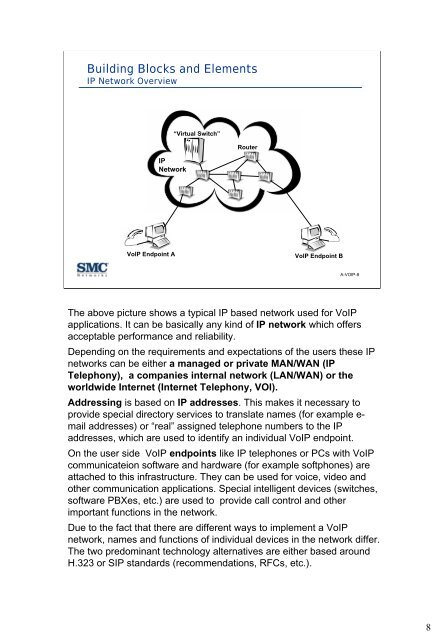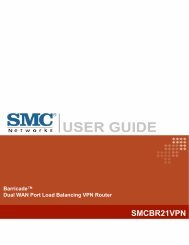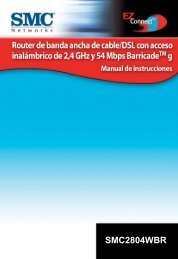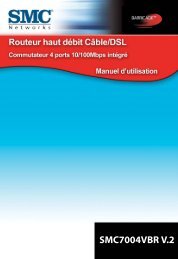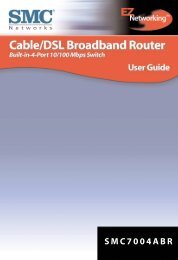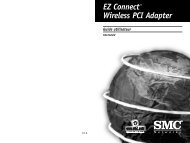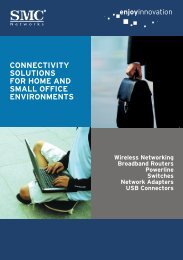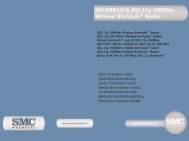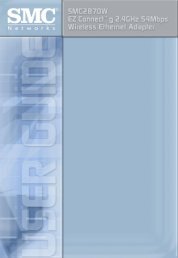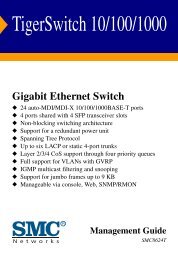Voice over IP Solutions (VoIP) - SMC
Voice over IP Solutions (VoIP) - SMC
Voice over IP Solutions (VoIP) - SMC
You also want an ePaper? Increase the reach of your titles
YUMPU automatically turns print PDFs into web optimized ePapers that Google loves.
Building Blocks and Elements<br />
<strong>IP</strong> Network Overview<br />
<strong>IP</strong><br />
Network<br />
Vo<strong>IP</strong> Endpoint A<br />
“Virtual Switch”<br />
Router<br />
Vo<strong>IP</strong> Endpoint B<br />
A-VO<strong>IP</strong>-8<br />
The above picture shows a typical <strong>IP</strong> based network used for Vo<strong>IP</strong><br />
applications. It can be basically any kind of <strong>IP</strong> network which offers<br />
acceptable performance and reliability.<br />
Depending on the requirements and expectations of the users these <strong>IP</strong><br />
networks can be either a managed or private MAN/WAN (<strong>IP</strong><br />
Telephony), a companies internal network (LAN/WAN) or the<br />
worldwide Internet (Internet Telephony, VOI).<br />
Addressing is based on <strong>IP</strong> addresses. This makes it necessary to<br />
provide special directory services to translate names (for example email<br />
addresses) or “real” assigned telephone numbers to the <strong>IP</strong><br />
addresses, which are used to identify an individual Vo<strong>IP</strong> endpoint.<br />
On the user side Vo<strong>IP</strong> endpoints like <strong>IP</strong> telephones or PCs with Vo<strong>IP</strong><br />
communicateion software and hardware (for example softphones) are<br />
attached to this infrastructure. They can be used for voice, video and<br />
other communication applications. Special intelligent devices (switches,<br />
software PBXes, etc.) are used to provide call control and other<br />
important functions in the network.<br />
Due to the fact that there are different ways to implement a Vo<strong>IP</strong><br />
network, names and functions of individual devices in the network differ.<br />
The two predominant technology alternatives are either based around<br />
H.323 or S<strong>IP</strong> standards (recommendations, RFCs, etc.).<br />
8


